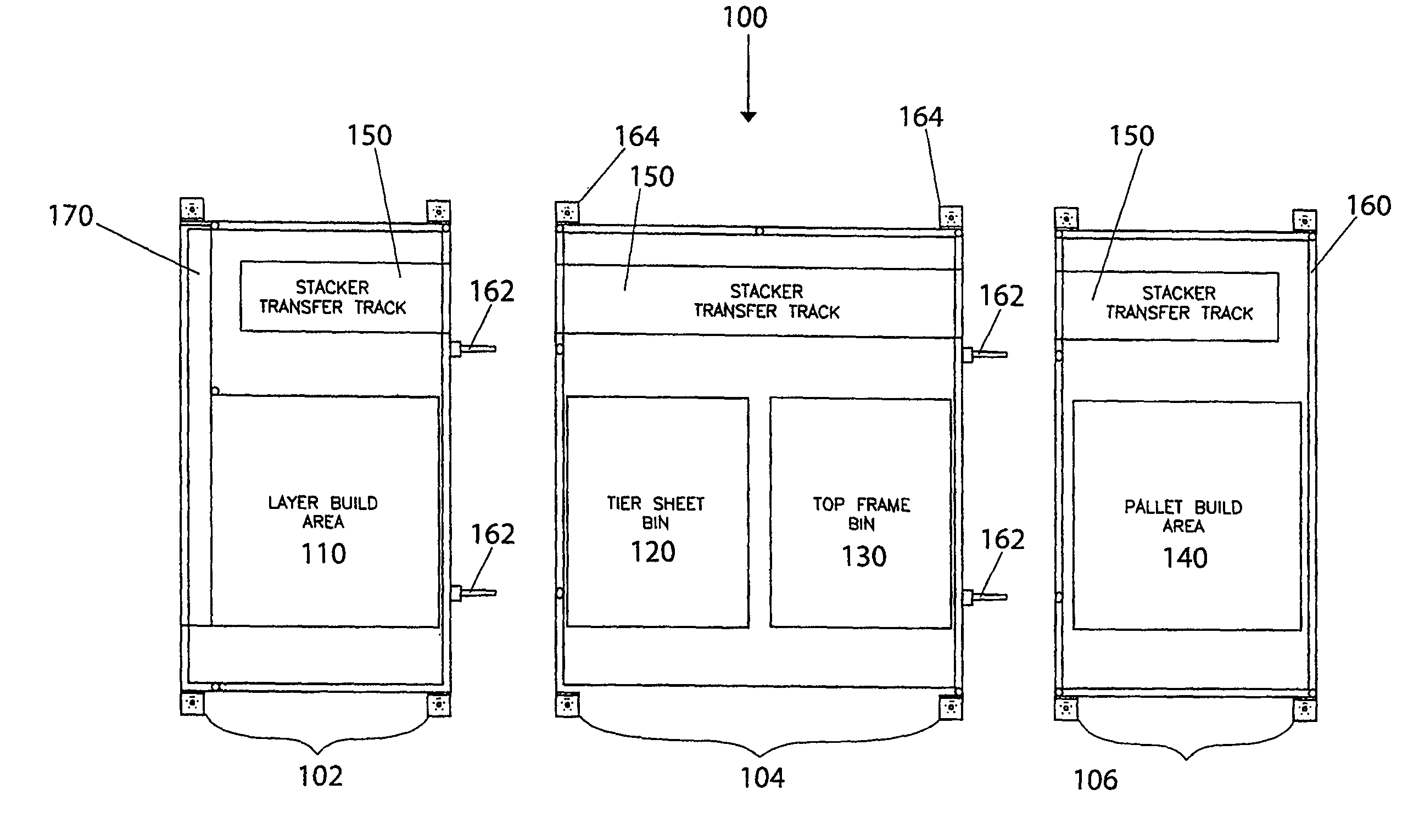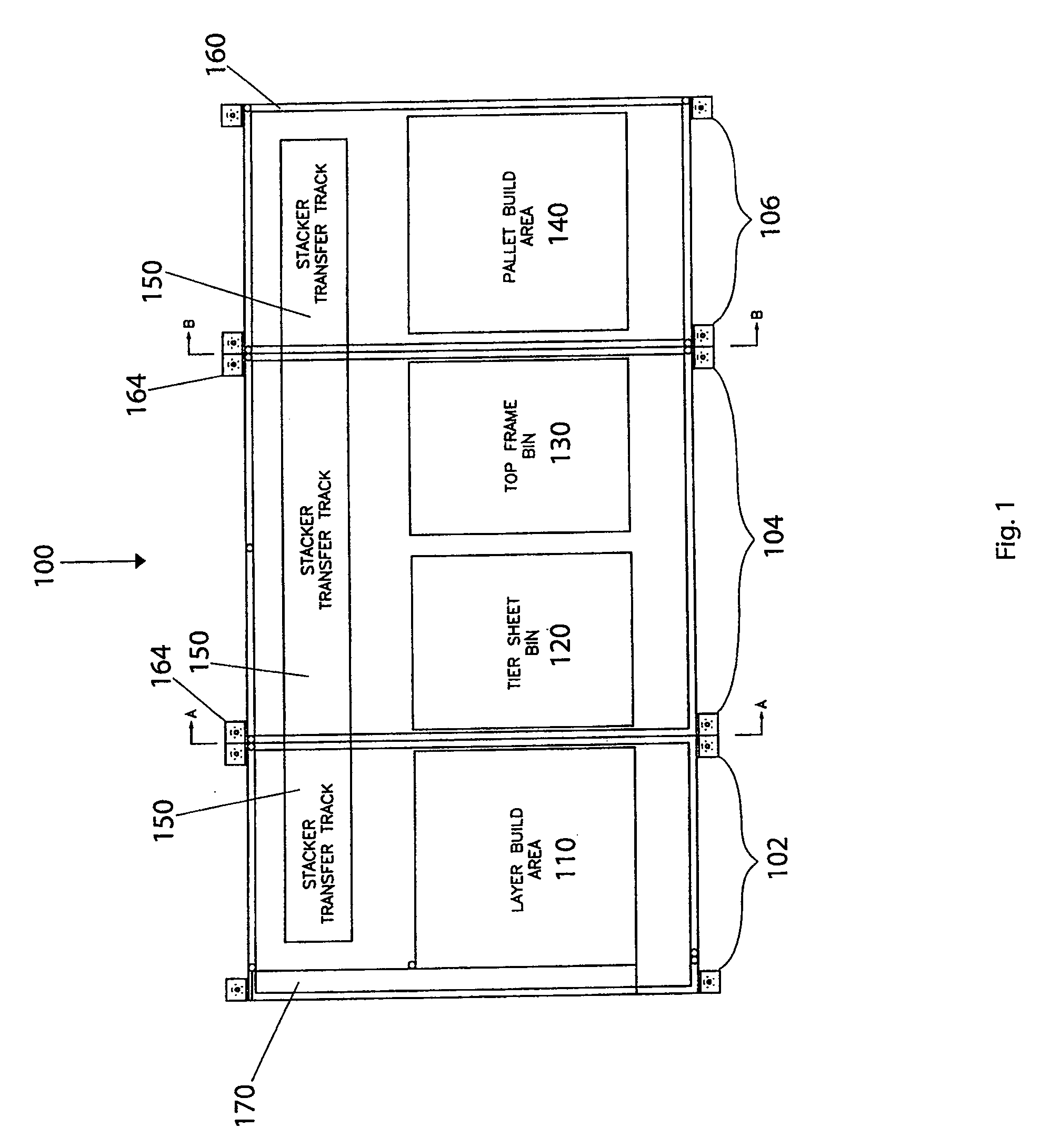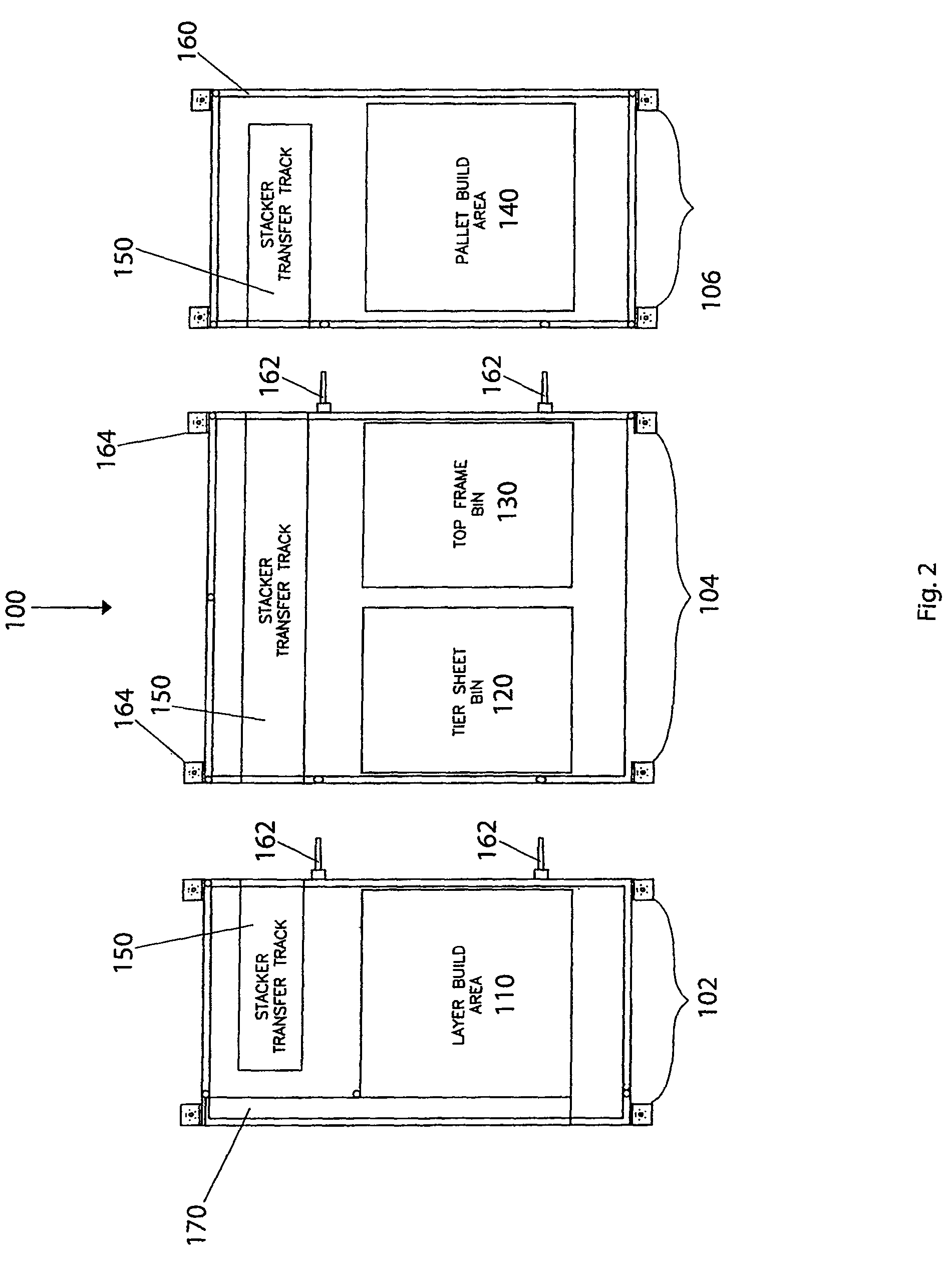Mobile split palletizer
a palletizer and mobile technology, applied in the field of articles handling systems, can solve the problems of requiring significant worker interaction, reducing the delivery cost of conventional manual palletizers, and reducing the delivery cost of goods
- Summary
- Abstract
- Description
- Claims
- Application Information
AI Technical Summary
Benefits of technology
Problems solved by technology
Method used
Image
Examples
Embodiment Construction
[0023]Referring now to the drawing, in which like reference numbers refer to like elements throughout the various figures that comprise the drawing, FIG. 1 shows the modular split palletizer 100, in a top schematic view, according to the present invention. The palletizer 100 includes a layer build area 110, a tier sheet bin 120, a top frame bin 130, a pallet build area 140, a stacker transfer track 110, and a sub-base or frame 160. The frame 160 is preferably made of steel.
[0024]A conveyor 170 delivers the articles 10 to the palletizer 100. The conveyor 170 may be included as part of the palletizer 100. Alternatively, the conveyor 170 may be a component separate from the palletizer 100. The conveyor 170 conveys articles 10 either singly or in single-layer patterns to the palletizer 100. The conveyor 170 may be a belt, chain, or powered roller conveyor, and may be an endless conveyor. The conveyor 170 delivers the articles 10 specifically to the layer build area 110 of the palletizer...
PUM
 Login to View More
Login to View More Abstract
Description
Claims
Application Information
 Login to View More
Login to View More - R&D
- Intellectual Property
- Life Sciences
- Materials
- Tech Scout
- Unparalleled Data Quality
- Higher Quality Content
- 60% Fewer Hallucinations
Browse by: Latest US Patents, China's latest patents, Technical Efficacy Thesaurus, Application Domain, Technology Topic, Popular Technical Reports.
© 2025 PatSnap. All rights reserved.Legal|Privacy policy|Modern Slavery Act Transparency Statement|Sitemap|About US| Contact US: help@patsnap.com



